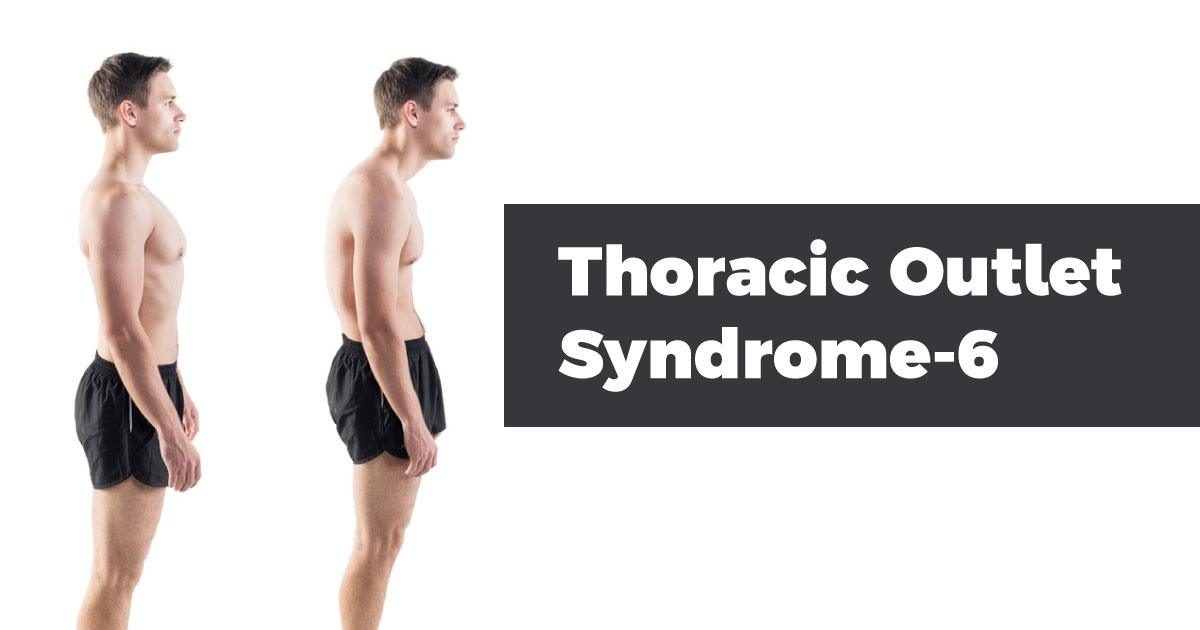Weakness in the Neurogenic TOS
Weakness in the Neurogenic TOS. Weakness is a common symptom in neurogenic thoracic outlet syndrome (TOS), which occurs when the nerves in the thoracic outlet are compressed or irritated, leading to symptoms such as pain, numbness, tingling, or weakness in the affected limb. Weakness in neurogenic TOS may be due to the compression or irritation of the nerves that control the muscles in the affected limb, leading to difficulty with gripping objects, performing fine motor skills, or weakness in the affected arm or hand.
The weakness in neurogenic TOS is usually more prominent in the hand and forearm muscles, which can become atrophied or wasted over time due to chronic nerve compression. Patients may experience difficulty with tasks such as opening jars, holding objects, or performing activities that require dexterity or fine motor control. The weakness in neurogenic TOS can range from mild to severe, and it may be progressive if the underlying compression or irritation of the nerves is not addressed.
Diagnosis of neurogenic TOS typically involves a combination of physical examination, imaging studies, and nerve conduction tests. Treatment may involve physical therapy, medications, or surgery to relieve the compression or irritation of the affected nerves, with the goal of improving strength and function in the affected limb.

Atrophy in the Neurogenic TOS
Atrophy is a common finding in neurogenic thoracic outlet syndrome (TOS), which occurs when the nerves in the thoracic outlet are compressed or irritated, leading to symptoms such as pain, numbness, tingling, or weakness in the affected limb. Atrophy refers to the wasting or loss of muscle tissue, which can occur when a muscle is not being used or when it is chronically deprived of nerve stimulation.
In neurogenic TOS, the atrophy is usually seen in the muscles of the affected limb, particularly in the hand and forearm muscles. The atrophy may be more prominent in severe cases of TOS or in cases where the nerve compression has been ongoing for an extended period of time.
In addition to atrophy, other signs of neurogenic TOS may include decreased muscle strength, diminished reflexes, and sensory disturbances such as numbness, tingling, or burning sensations. Patients with neurogenic TOS may also experience muscle twitches, cramps, or spasms in the affected limb.
Diagnosis of neurogenic TOS typically involves a combination of physical examination, imaging studies, and nerve conduction tests. Treatment may involve physical therapy, medications, or surgery to relieve the compression or irritation of the affected nerves, with the goal of improving strength, function, and preventing further muscle atrophy.
Sudeck Atrophy in The Neurogenic TOS
Sudeck atrophy, also known as complex regional pain syndrome type I (CRPS-I), is a rare but potential complication of neurogenic thoracic outlet syndrome (TOS). It is a progressive condition characterized by chronic pain, swelling, and stiffness in the affected limb, often accompanied by changes in skin color and texture, hair and nail growth, and muscle atrophy.
In the context of neurogenic TOS, Sudeck atrophy can develop when the nerves in the thoracic outlet are chronically compressed or irritated, leading to reduced blood flow and oxygen supply to the affected limb. This can result in tissue damage, inflammation, and abnormal bone remodeling, leading to progressive muscle and bone loss, as well as joint stiffness and contractures.
The diagnosis of Sudeck atrophy in neurogenic TOS can be challenging, as it requires careful clinical evaluation, imaging studies, and exclusion of other potential causes of muscle and bone loss, such as tumors or infections. Treatment may involve a combination of physical therapy, pain management, and medication to improve blood flow and reduce inflammation. In some cases, surgery may be necessary to release the nerve compression and restore blood flow to the affected limb. Early diagnosis and prompt treatment can help prevent or minimize the severity of Sudeck atrophy in neurogenic TOS.
Sensory changes in the Neurogenic TOS
Neurogenic thoracic outlet syndrome (TOS) can cause various sensory changes in the affected arm and hand. These sensory changes may include:
- Numbness or tingling: Patients may experience numbness or tingling in the arm, hand, and fingers, which can be persistent or intermittent.
- Hypersensitivity: Patients may experience hypersensitivity to touch, temperature, or pressure, particularly in the affected fingers.
- Pain: Patients may experience burning, shooting, or stabbing pain in the affected arm and hand, which may worsen with certain movements or positions.
- Weakness: Patients may experience weakness or fatigue in the affected arm, particularly during tasks that require repetitive or sustained movements.
These sensory changes are due to nerve compression or irritation in the thoracic outlet, which can affect the normal transmission of sensory information from the arm and hand to the brain. The severity and location of the sensory changes can vary depending on the specific nerves affected and the degree of compression.
Diagnosis of neurogenic TOS may involve a variety of tests, including nerve conduction studies, electromyography, and imaging studies such as MRI or CT scans. Treatment may involve a combination of physical therapy, medication, and surgery to relieve the nerve compression and improve sensory function in the affected arm and hand.
Positive Tinel’s sign in the Neurogenic TOS
A positive Tinel’s sign is a common finding in neurogenic thoracic outlet syndrome (TOS). Tinel’s sign is a physical examination test used to identify nerve irritation or damage. In the case of neurogenic TOS, the test is performed by tapping or pressing along the path of the affected nerve, such as the ulnar nerve or the median nerve, as it passes through the thoracic outlet.
A positive Tinel’s sign in neurogenic TOS means that tapping or pressure along the affected nerve causes a tingling or shock-like sensation that radiates down the arm and into the hand and fingers. This is an indication that the nerve is irritated or compressed at some point along its course through the thoracic outlet.
However, a positive Tinel’s sign alone is not sufficient to diagnose neurogenic TOS. It is important to perform a thorough physical examination, including other tests such as nerve conduction studies and imaging studies, to confirm the diagnosis and identify the specific location of the nerve compression. Treatment may involve physical therapy, medication, and in some cases, surgery to relieve the nerve compression and improve nerve function.
Positive Phalen’s test in the Neurogenic TOS
Phalen’s test is a physical examination test used to evaluate the presence of carpal tunnel syndrome, which is a type of nerve compression in the wrist. It involves holding the wrists in a flexed position for 60 seconds to compress the median nerve. A positive test is indicated by the presence of numbness, tingling, or pain in the fingers.
In neurogenic thoracic outlet syndrome (TOS), a positive Phalen’s test may also be observed due to compression of the median nerve at the thoracic outlet. The compression may occur at the level of the scalene muscles or due to the presence of cervical ribs or other anatomical abnormalities.
A positive Phalen’s test in neurogenic TOS may indicate the presence of median nerve compression and can be used as a diagnostic tool to identify the condition. However, it should be noted that a positive test alone is not sufficient to diagnose neurogenic TOS, and further evaluation and testing, such as nerve conduction studies and imaging studies, are necessary to confirm the diagnosis and identify the specific location of the nerve compression. Treatment may involve physical therapy, medication, and in some cases, surgery to relieve the nerve compression and improve nerve function.
Positive Adson’s test in the Neurogenic TOS
Adson’s test is a physical examination maneuver used to evaluate for thoracic outlet syndrome (TOS), specifically vascular TOS. During the test, the patient is asked to turn their head to the side being tested and extend it while the examiner palpates the patient’s radial pulse. The patient is then asked to take a deep breath and hold it while maintaining their head and neck position. If the radial pulse disappears or weakens during the maneuver, it is considered a positive test.
A positive Adson’s test may indicate that there is compression of the subclavian artery or vein as they pass through the thoracic outlet. The compression may be caused by various anatomical abnormalities or tightness in the surrounding muscles and tissues.
It is important to note that a positive Adson’s test alone is not enough to diagnose TOS, and other tests and imaging studies may be needed to confirm the diagnosis. Treatment for vascular TOS may include physical therapy, medication, or in some cases, surgery to relieve the compression and improve blood flow.
Posture-related symptoms in the Neurogenic TOS
Posture-related symptoms are commonly seen in neurogenic TOS, which is caused by compression of the brachial plexus. The brachial plexus is a network of nerves that travel from the neck to the arm and hand, and compression of these nerves can cause a range of symptoms.
In neurogenic TOS, symptoms may be exacerbated by certain postures or movements that put pressure on the affected nerves. For example, holding the arms above the head for an extended period of time, carrying heavy bags or backpacks on one shoulder, or sleeping with the arms above the head can all lead to increased nerve compression and worsening of symptoms.
Posture-related symptoms of neurogenic TOS may include:
- Numbness, tingling, or pain in the arm or hand
- Weakness or muscle wasting in the hand or arm
- Difficulty gripping or holding objects
- Fatigue or heaviness in the arm
- Swelling or discoloration of the arm or hand
Physical therapy may be recommended to help manage posture-related symptoms of neurogenic TOS. A physical therapist can teach exercises and stretches to improve posture and relieve pressure on the affected nerves. In some cases, lifestyle modifications or ergonomic adjustments may also be recommended to prevent exacerbation of symptoms.
Keywords: Thoracic Outlet Syndrome, TOS, brachial plexus, nerves, anatomy, scalene muscle, cervical rib, first rib, costoclavicular syndrome, Pancoast tumor, neurofibroma, hematomas, Vascular TOS, Neurogenic TOS, Non-specific TOS, Brachial Plexus Neuralgia, treatment options, physical therapy, surgery, occupational therapy, chiropractic care, acupuncture, medications.
Last Revision: 10.03.2023

